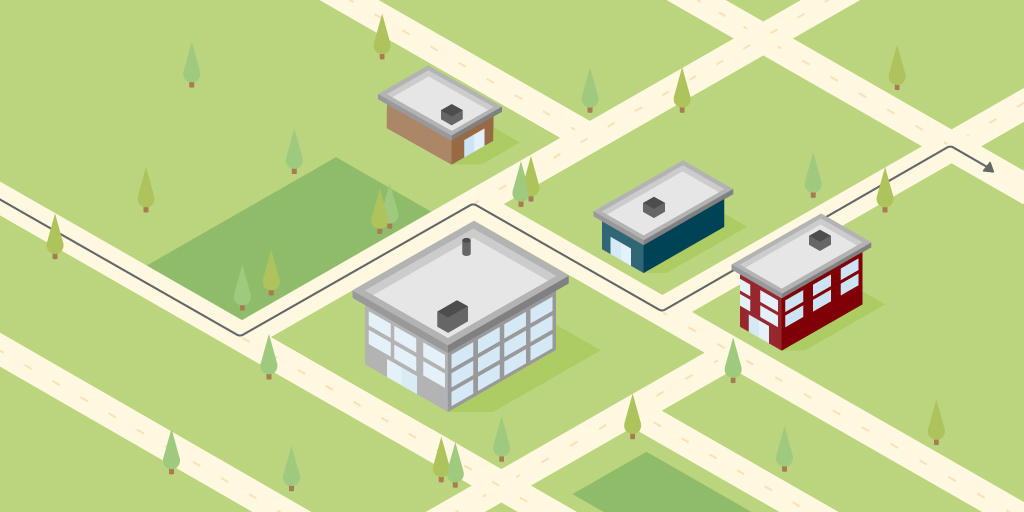September 1, 2016
Conversion Rate Optimization
There are a lot of misconceptions about conversion optimization. There shouldn’t be. After all, there are more difficult subjects to master (aeronautical engineering, open heart surgery, and artificial intelligence all come to mind). But for some reason, many people (myself included) have trouble learning conversion optimization at first. Why is that?
You need to start with a tree trunk education
My theory is that most marketers learn the conversion optimization “leaves and branches” without a “tree trunk” foundation. Tim Urban, the writer behind Wait But Why, explains this perspective on the Art of Charm podcast:
> “When I read an article, what happens is I read it, I still don’t get it, and I assume if I keep reading articles, I’ll eventually get it. But it doesn’t happen. It’s because every article is like a branch or a leaf of a tree. But I don’t have a trunk. I can read a leaf, but it just falls down, it goes in one ear and out the other. So what you have to do is bite the bullet once, and give yourself the thorough education of a tree trunk foundation of knowledge. And then suddenly, when you read an article, not only do you get it, but it’s actually delish suddenly...it’s so interesting suddenly.”
Getting a tree trunk foundation of knowledge is exactly how Tim learned (and wrote about) topics as diverse as artificial intelligence, cryonics, and the way Elon Musk thinks and operates.

Continuing with the metaphor…if you a pick a random conversion optimization blog post from the internet, odds are it’s a branch. Reading a piece as complicated as this one about phone numbers on websites (with very granular, data-backed methods) would likely confuse you instead of illuminate what optimization is all about. You need the tree trunk first.
Optimization foundations (and a path forward)
Conversion rate optimization is a messy field, because it’s comprised of so many separate disciplines. Think about it. Many CRO experts say we should know (with some level of prowess):
- User experience design
- Analytics
- Project management
- Copywriting
- Technical knowledge (and tool specific skills like Google Analytics or Optimizely)
Even if you simplify things and say Analytics + User Experience = Conversion Rate Optimization, then you’re still dealing with two complex fields, not to mention CRO as its _own _field. This mess makes it hard to nail down a CRO tree trunk of knowledge, which leads me to step one of your practical roadmap to learning optimization…
Step 1: Learn the conversion optimization fundamentals in a linear way
The first thing I would do (and did) to learn optimization is find a source that walks through the fundamentals. It could be a course, book, article, or whatever. The tree trunk knowledge is what matters. The “Conversion Optimization Course for Professionals” in the ConversionXL Institute played this role for me. I work there, so I’m biased, but the course saves you time from seeking and vetting sources, so you can rest assured the information isn’t shitty. Plus, you get a certificate. If you don’t have a huge education budget, check out one of the many optimization books:
- Your Customer Creation Equation
- A/B Testing: The Most Powerful Way to Turn Clicks Into Customers
- You Should Test That
- Call To Action: Secret Formulas to Improve Online Results
I recommend reading one. Maybe two. After that, they all start sounding the same anyway. At the very least, read a comprehensive guide on conversion optimization like this or this. Udemy and Lynda also offer a few decent courses. If you’re really ambitious, you can get one-on-one coaching from a CRO expert like Peep Laja. Once the fundamentals are out of the way, it’s time to fill in your knowledge gaps.
Step 2: Brush up on the pillars of CRO
Conversion optimization experts come from a variety of backgrounds. The majority are either analysts or UX people, but the long tail is quite varied. The required skillset is also varied. Peep Laja puts it this way: “Optimizers don’t have the luxury of just being copywriting wizards or analytics ninjas – they have to be both and then some. They need to be curious and always learning more stuff.” Conversion optimization experts do tend to be curious. The good ones at least. So be prepared to learn a lot about a lot. Below are a few resource recommendations for each skill I think is important for optimizers. You don’t need to master all of these, but you do need to acquire a working knowledge of each especially if you’ve got a specialized team. User experience User experience is at the heart of good optimization. Solid UX leads to more conversions and long term customer loyalty. It’s a big topic. Read: Don’t Make Me Think Explore: Practical Statistics for the User Experience Copywriting Copywriting is a large part of the user experience and provides motivation, clarity, value, etc. (or the lack thereof). Read: The Adweek Copywriting Handbook Read: Ogilvy on Advertising Analytics Analytics helps you discover leaks in your site, opportunities for optimization, what’s working, and what’s not. Read: Lean Analytics Explore: Analytics for All: Beginners to Experts Statistics A/B testing is nothing but a controlled experiment online, so you’re going to have to brush up on basic stats so you don’t BS your way through the process. Read: Ignorant No More: Crash Course on A/B Testing Statistics Explore: A/B Testing: Online Experiment Design and Analysis Psychology and persuasion Great marketers understand how people are wired, and how to nudge them toward the next step. Understanding behavioral psychology helps. Read: Thinking, Fast and Slow Explore: Economics and Psychology (MIT) I’ve also put together a list of my favorite conversion optimization books if you’re a nerd and want to keep diving in. But if you want to make money and get good at optimization, you should probably continue to the next step…
Step 3: Start doing conversion optimization work
Diving into tree trunk knowledge is the most taxing part of the learning conversion optimization. Adding on the branches is the easy stuff. The most important part, though, is gathering experience through actually doing optimization. Reading stuff only goes so far. You need to do customer research, dig into analytics, and set up tests. If you can’t do it at work, or you don’t have consulting clients, set up your own site as a playground. This is where you’ll start tinkering with tools. Optimizely and Visual Website Optimizer are the perfect places to get your feet wet. So start optimizing, make some mistakes, and learn as you go.
Step 4: Explore the “small branches and leaves”
Here’s the fun stuff. Tim Urban, in the podcast I mentioned above, gave the example of learning guitar. I play, so I can vouch for his accuracy. According to him, for a while playing guitar just isn’t that fun. You can’t make the damn thing sound good. Simple songs and scales are hard. If you’re fortunate enough to have a good teacher, you’re probably pissed off that they keep telling you to use the “proper technique.” But of course you bite the bullet and learn your scales and do your exercises (or if you’re like me, you just learn some easy stuff like Blink 182 and Sublime). Soon playing starts to get fun. Chord progressions get easier, each song sounds better. Things start to click. And the better you get, the easier it is to learn all the esoteric shit (slides, pinch harmonics, and the lot).  The same goes for optimization. You’ll soon find yourself diving into:
The same goes for optimization. You’ll soon find yourself diving into:
- Advanced targeting and segmentation (rigorous personalization)
- The applications of artificial intelligence in optimization
- Optimizing business functions, not just e-commerce interfaces
And on and on and on. The great thing about our industry is how many breakthroughs and innovations have yet to happen. But it all starts with learning tree trunk knowledge, brushing up on CRO pillars, and actually doing optimization yourself. Head down this road and you’ll be on your way to becoming a conversion optimization expert in no time. What route did you take to learn conversion optimization? Any resources you’d recommend? Let us know in the comments.













